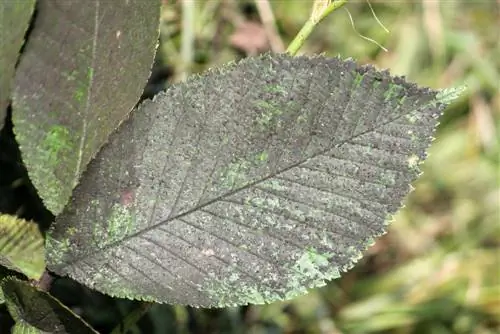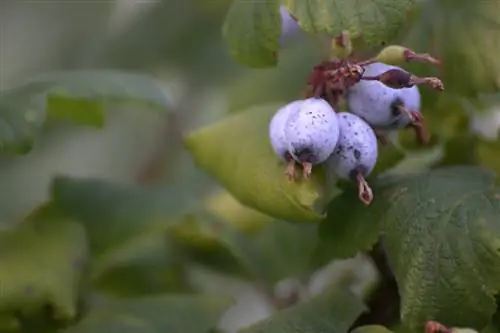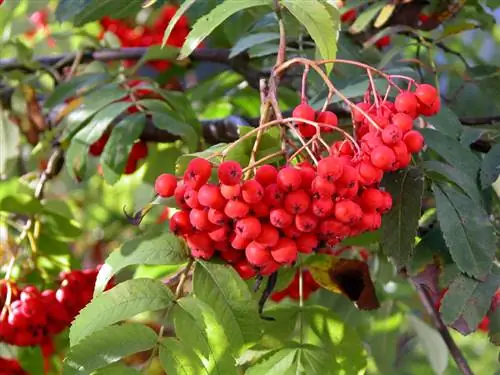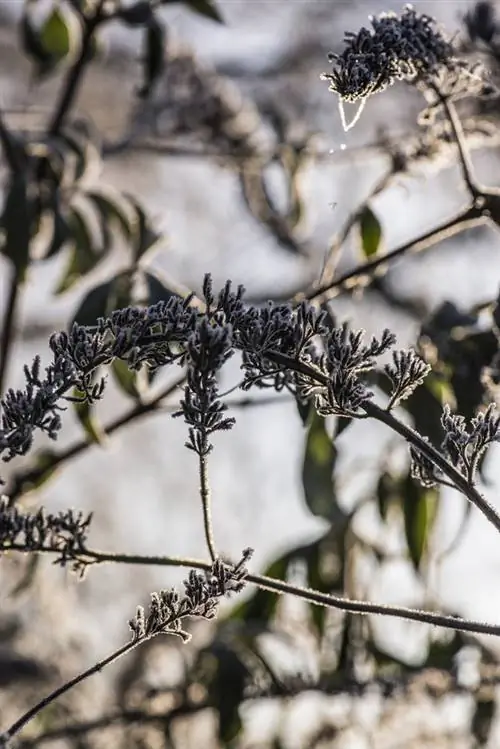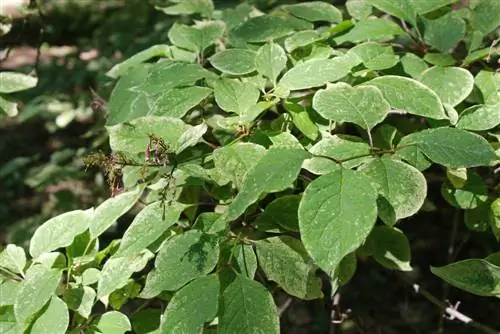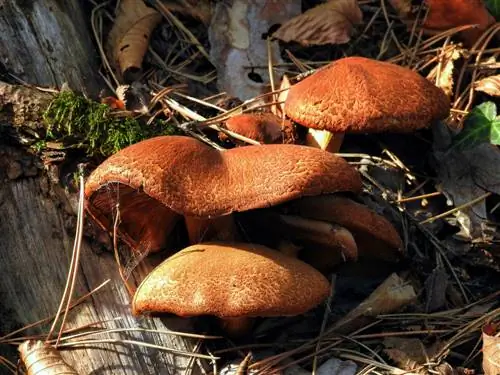- Author admin [email protected].
- Public 2023-12-16 16:46.
- Last modified 2025-01-23 11:21.
With its golden foliage, the golden elm attracts everyone's attention. Unfortunately, the deciduous tree is also susceptible to diseases and pests. Numerous beetles love to nest in the leaves of the golden elm. Not to be forgotten is Dutch elm disease, which has become increasingly widespread in recent years and is threatening to weaken the general population of elm trees. You can find out how to protect your golden elm from disease in the following article.
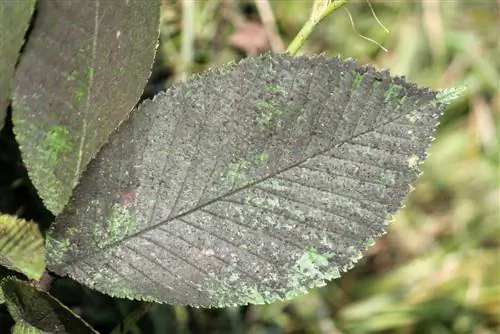
What diseases and pests threaten golden elms and how can you combat them?
The most common diseases and pests affecting golden elms include Dutch elm disease (caused by fungal infection), elm bark beetles, gall mites and voles. For prevention and treatment, pruning of affected branches, oil tinctures, rapeseed oil, paraffin, wire mesh or special sprays are recommended.
The Dutch elm disease
Dutch elm disease is considered the most aggressive disease an elm tree can suffer from. It is not uncommon for the fungus to cause the tree to die completely. Fortunately, the golden elm is one of the less susceptible elm species to serious fungal infections.
First signs
- deformed and brown leaves in the crown
- However, leaves do not fall off
- the golden elm is drying out
- the golden elm is dying
Treat
Prune back all affected branches at the first signs of Dutch elm disease. If the disease has progressed too far, the tree must inevitably be felled.
Pests
The most common pests of the golden elm are
- the elm bark beetle
- Gall mites or the elm gall aphid
- Voles
Dry branches, holes in the bark or spider web-like threads on the branches are serious signs of a pest infestation.
The elm bark beetle
The elm bark beetle is the most dangerous pest of the golden elm. No wonder, as it transmits the fungus responsible for Dutch elm disease. He can be put to flight with a special oil tincture. However, it will only be seen next spring whether the measure was successful. It is safer to radically cut back the affected branches. You should not take the appearance of the tree into account, but rather remove all diseased branches.
Gall mites and the elm gall aphid
Thickening of the leaves indicates gall mites. The pests don’t like rapeseed oil or paraffin at all. You can also get various spray agents from specialist retailers
Voles
You can clearly recognize voles by the hollow tunnels in the ground near the trunk. They damage the golden elm by eating the roots and thus restricting the water supply. As a preventative measure, place a wire mesh in the soil when planting the golden elm.

